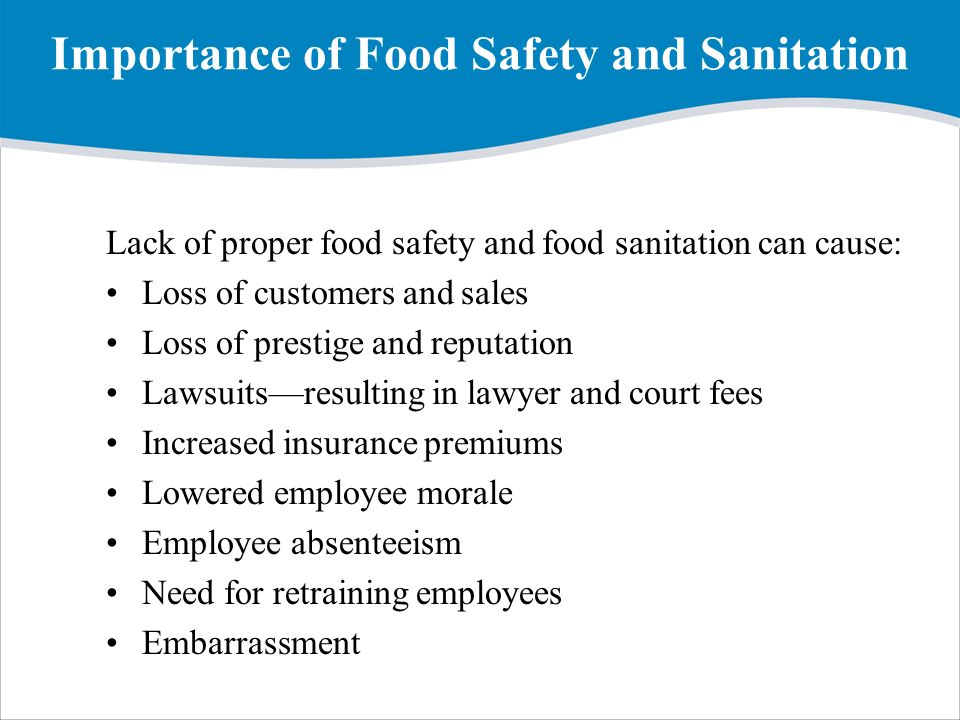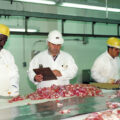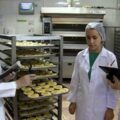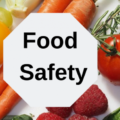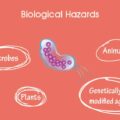All over the world people are seriously affected every day by diseases that are caused by consuming unhygienic and unsafe food. We have to give due emphasis to good hygienic practices to prevent and control foodborne diseases. Foodborne diseases result from eating foods that contain infectious or toxic substances. The food we eat should be free from contaminants such as microorganisms and chemicals. WHO estimates that 600 million – almost 1 in 10 people in the world – fall ill after eating contaminated food and 420 000 die every year, resulting in the loss of 33 million healthy life years (DALYs).
What’s the Difference Between Food Safety and Hygiene?
The term ‘food safety’ encompasses all the important practices that businesses must follow to ensure food is fit for consumption. ‘Food hygiene is one of these important practices, which means it’s a subcategory of ‘food safety’.
Because food hygiene falls under the umbrella term ‘food safety’, food hygiene itself does not include all the other key areas of food safety. This is an important difference to be aware of, particularly when applying food management procedures to your premises. Food safety refers to an entire system of managing risks. Meanwhile, food hygiene refers to an individual set of practices for controlling only one aspect.
Knowing this will help you better determine what level of knowledge people in your business require and how to apply all the necessary controls. This, in turn, can help you make a more informed decision about improving your business’s practices and what additional training you may need.
Food Safety can be defined as handling, preparing and storing food or drink in a way that best reduces the risk of consumers becoming sick from the food-borne disease. The principles of food safety aim to prevent food from becoming contaminated and causing food poisoning.
With this in mind, ensuring that food is safe for human consumption is likely the most critical part of the food preparation process. This ranges from what is called farm to fork, meaning from the farms all the way to your plate. Check out our article on the food production chain and the possible ways contamination can happen.
This means that food hygiene is important at home as well as in the restaurant, retail store or food factory. There has become an ever-increasing awareness of food safety by the general public and news agencies are reporting on food recalls and outbreaks much more often.
Reviewing the available statistics, CDC estimates that 1 in 6 Americans get sick from contaminated foods or beverages each year, and 3,000 die. The U.S. Department of Agriculture (USDA) estimates that foodborne illnesses cost more than $15.6 billion each year.
Major foodborne illnesses and causes
Foodborne illnesses are usually infectious or toxic in nature and caused by bacteria, viruses, parasites or chemical substances entering the body through contaminated food or water.
Foodborne pathogens can cause severe diarrhea or debilitating infections including meningitis. Chemical contamination can lead to acute poisoning or long-term diseases, such as cancer. Foodborne diseases may lead to long-lasting disability and death. Examples of unsafe food include uncooked foods of animal origin, fruits and vegetables contaminated with faeces, and raw shellfish containing marine biotoxins.
Bacteria:
- Salmonella, Campylobacter, and Enterohaemorrhagic Escherichia coli are among the most common foodborne pathogens that affect millions of people annually – sometimes with severe and fatal outcomes. Symptoms are fever, headache, nausea, vomiting, abdominal pain and diarrhoea. Examples of foods involved in outbreaks of salmonellosis are eggs, poultry and other products of animal origin. Foodborne cases with Campylobacter are mainly caused by raw milk, raw or undercooked poultry and drinking water. Enterohaemorrhagic Escherichia coli is associated with unpasteurized milk, undercooked meat and fresh fruits and vegetables.
- Listeria infection leads to miscarriage in pregnant women or death of newborn babies. Although disease occurrence is relatively low, listeria’s severe and sometimes fatal health consequences, particularly among infants, children and the elderly, count them among the most serious foodborne infections. Listeria is found in unpasteurised dairy products and various ready-to-eat foods and can grow at refrigeration temperatures.
- Vibrio cholerae infects people through contaminated water or food. Symptoms include abdominal pain, vomiting and profuse watery diarrhoea, which may lead to severe dehydration and possibly death. Rice, vegetables, millet gruel and various types of seafood have been implicated in cholera outbreaks.
Antimicrobials, such as antibiotics, are essential to treat infections caused by bacteria. However, their overuse and misuse in veterinary and human medicine has been linked to the emergence and spread of resistant bacteria, rendering the treatment of infectious diseases ineffective in animals and humans. Resistant bacteria enter the food chain through the animals (e.g. Salmonella through chickens). Antimicrobial resistance is one of the main threats to modern medicine.
Viruses: Norovirus infections are characterized by nausea, explosive vomiting, watery diarrhoea and abdominal pain. Hepatitis A virus can cause long-lasting liver disease and spreads typically through raw or undercooked seafood or contaminated raw produce. Infected food handlers are often the source of food contamination.
Parasites: Some parasites, such as fish-borne trematodes, are only transmitted through food. Others, for example tapeworms like Echinococcus spp, or Taenia solium, may infect people through food or direct contact with animals. Other parasites, such as Ascaris, Cryptosporidium, Entamoeba histolytica or Giardia, enter the food chain via water or soil and can contaminate fresh produce.
Prions: Prions, infectious agents composed of protein, are unique in that they are associated with specific forms of neurodegenerative disease. Bovine spongiform encephalopathy (BSE, or “mad cow disease”) is a prion disease in cattle, associated with the variant Creutzfeldt-Jakob Disease (vCJD) in humans. Consuming bovine products containing specified risk material, e.g. brain tissue, is the most likely route of transmission of the prion agent to humans.
Chemicals: Of most concern for health are naturally occurring toxins and environmental pollutants.
- Naturally occurring toxins include mycotoxins, marine biotoxins, cyanogenic glycosides and toxins occurring in poisonous mushrooms. Staple foods like corn or cereals can contain high levels of mycotoxins, such as aflatoxin and ochratoxin, produced by mould on grain. A long-term exposure can affect the immune system and normal development, or cause cancer.
- Persistent organic pollutants (POPs) are compounds that accumulate in the environment and human body. Known examples are dioxins and polychlorinated biphenyls (PCBs), which are unwanted by-products of industrial processes and waste incineration. They are found worldwide in the environment and accumulate in animal food chains. Dioxins are highly toxic and can cause reproductive and developmental problems, damage the immune system, interfere with hormones and cause cancer.
- Heavy metals such as lead, cadmium and mercury cause neurological and kidney damage. Contamination by heavy metal in food occurs mainly through pollution of air, water and soil.
Why Is Food Safety and Sanitation Important?
Food hygiene is important for the following reasons:
- If food or drink is not safe to eat, you cannot eat or drink. The easiest example of this is safe drinking water. We would never drink water that did not come from a reputable source. The very same principle applies to food.
- Every day, people worldwide get sick from the food or drink they consume. Bacteria, viruses and parasites found in food can cause food poisoning.
- There is no immediate way of telling if food is contaminated because you cannot see, taste or smell anything different from the norm.
- Food poisoning can lead to gastroenteritis and dehydration or potentially even more serious health problems such as kidney failure and death.
- This risk is especially significant for those in the high-risk category: Small children/ babies, pregnant moms, the elderly and immunocompromised, especially HIV infections and cancer patients.
- Food hygiene and safety prevent germs from multiplying in foods and reaching dangerous levels.
- Ensures daily healthy family living.
- Keeping one healthy and preventing the additional cost of buying medication and medical check-ups. This is especially important is business. Companies worldwide loss Billions of Dollars per year due to staff downtime.
- Hand washing accounts from 33% of all related food poisoning cases. It is therefore important to maintain good personal hygiene practice. This is something we are taught early in our childhood, yet hand washing is still a critical problem in the kitchen
Cross-contamination is a major cause of food poisoning and can transfer bacteria from one food to another (usually raw foods to ready to eat foods). It is crucial to be aware of how it spreads so you will know how to prevent it. Good food hygiene is therefore essential for food factories to make and sell food that is safe to eat. The first step is for the management and staff to have the knowledge and understand of what food hygiene and food safety is.



